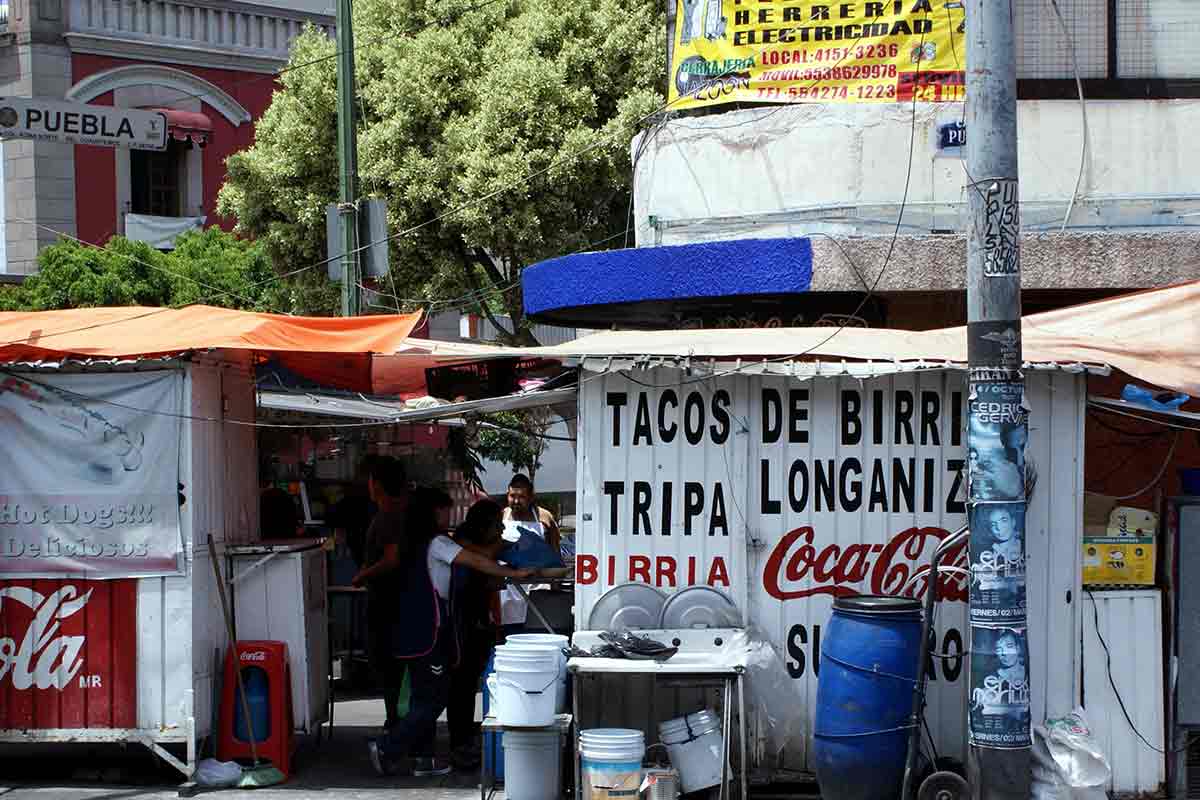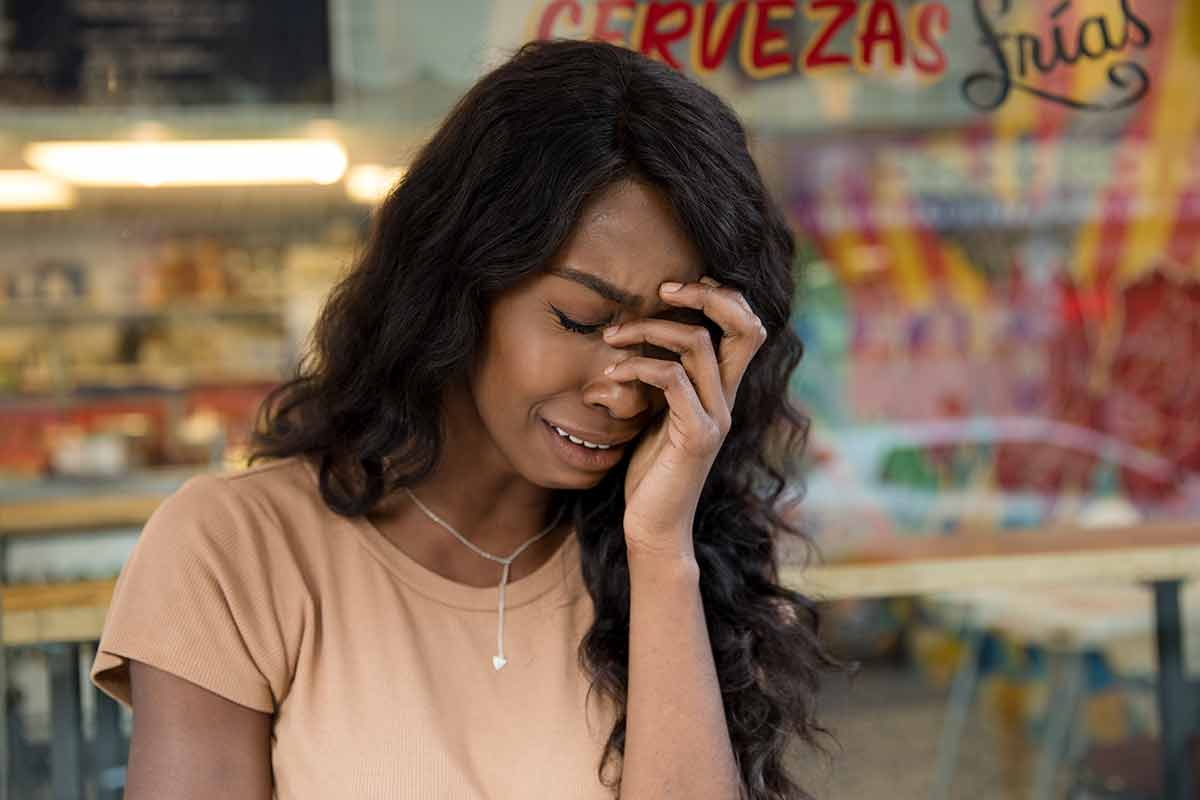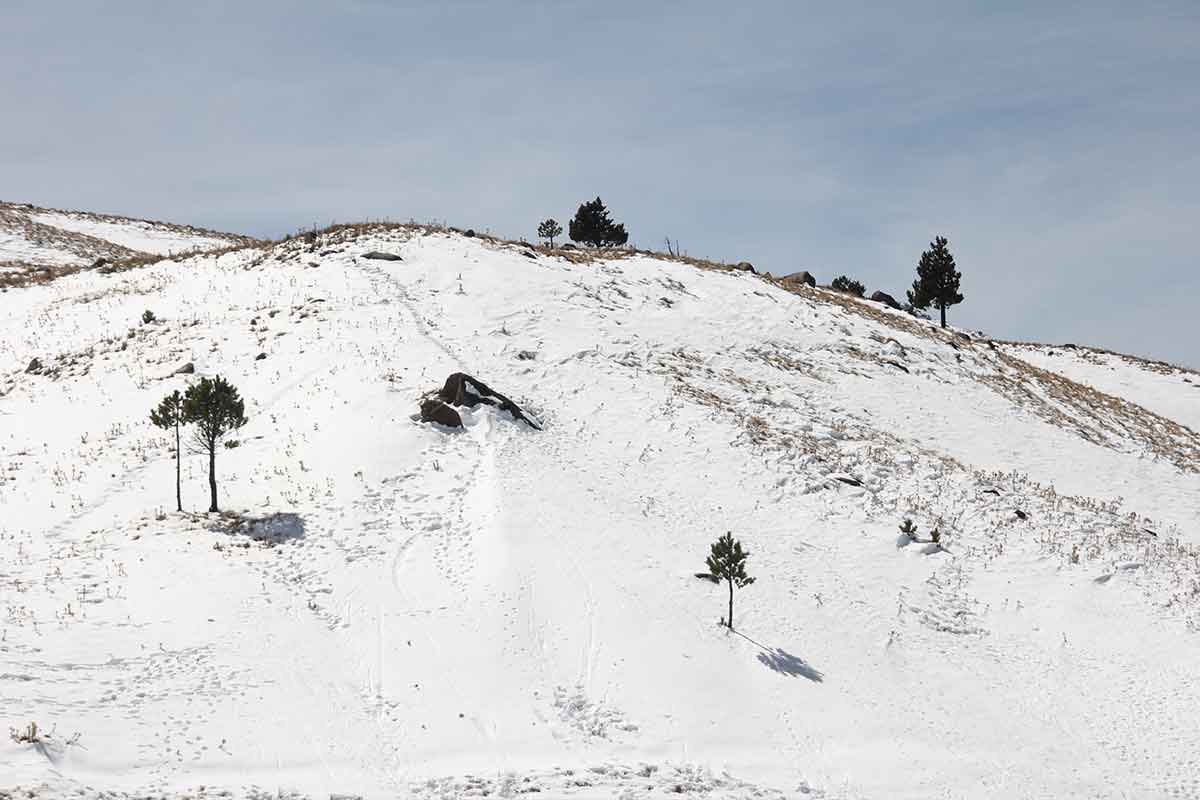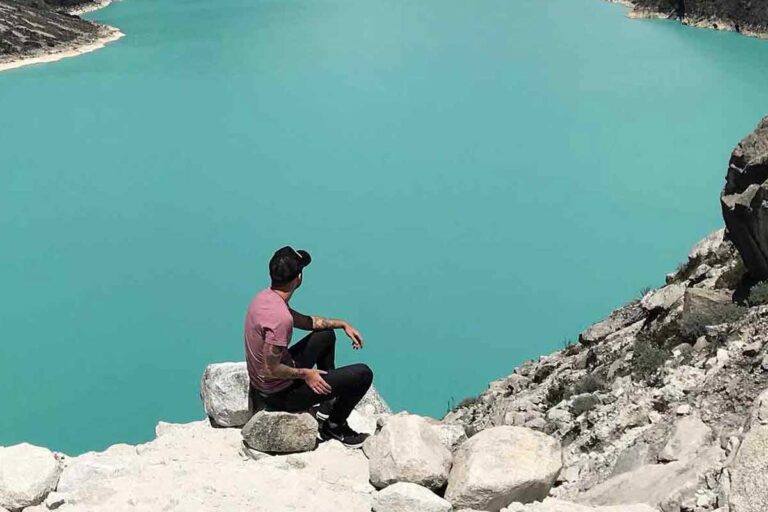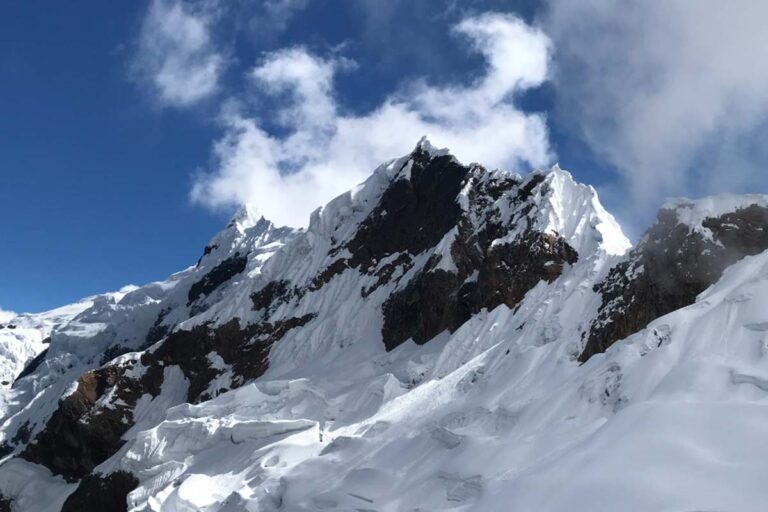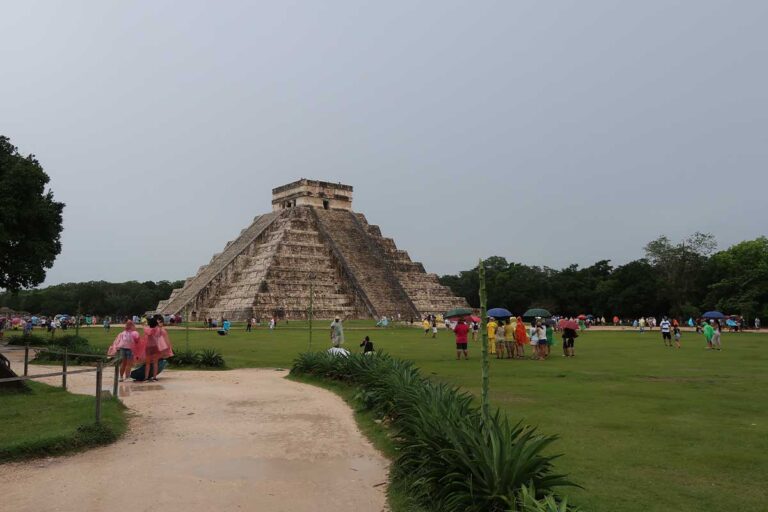How to NOT Get Sick in Mexico
How do you avoid getting sick in Mexico?
When we think of heading to Mexico, we mostly imagine sitting on a tropical beach without a care in the world or hiking through the jungle to visit lost Mayan temples. Usually (well we hope at least), sitting over a toilet for hours on end isn’t part of the dream.
However, for many, it’s an unfortunate reality, given Mexico is still a third-world country with its own risks and all.
How to Not Get Sick in Mexico
In this comprehensive guide, we’ll explore Mexico, and how to avoid getting ill whilst on your travels here.
This includes knowing the major risks for you during your holiday, and how to best prepare with our top recommendations.
How Safe is Mexico?
We’ve wrote a lot about backpacking Mexico and it is safe to say that it is an extremely varied country, with biomes that range from jungle and mountains to deserts.
As a result, these areas have their own risks which are rarely talked about (a more fun topic is cartels which people are forever fascinated by).
Most safety guides only focus on the people, crime, and other risks when traveling to a new place. However, we rarely think about potentially getting food poisoning, or getting sick from eating a dodgy side plate of vegetables.
Without even needing to research, we do have common sense in that we get any necessary vaccinations and advice before we leave (if you don’t we highly recommend it, unless you don’t mind sitting in a third-world hospital. And take it from us – it’s not a place you want to be).
Mexico as a whole does have many risks, though some can be location-dependent whilst others can be found throughout the nation.
Always look up where you’re heading to know what the exact risks are, and use the guide below to properly plan before leaving.
Got travel insurance for Mexico?
Food Poisoning in Mexico
Of all the different illnesses, food poisoning is one of the most common risks when in Mexico. Having caught it myself (George) on my travels here, it’s definitely not something I’d want to repeat again, especially with third-world hospitals being what they are and all.
Common Food Poisoning Risks
Mexico is home to some of the tastiest foods in the world. Whilst here you’ll want to sample it all, or well, most of it at least.
When eating in expensive and more established restaurants, 99+% of the time the food is well prepared and cooked, so there’s no problem.
The issue is when eating street food, so the trick is to choose whichever venue is popular amongst locals (since any place that makes locals sick is not going to be everyone’s first choice).
A common reason for food poisoning is poor hygiene and poorly prepared meats and foods. Another is eating raw fruits that haven’t been washed probably, so it’s always best to avoid veggies if eating street foods.
How to Eat Safely in Mexico
Firstly it’s really important to state that no matter how well you prepare yourself, there’ll always be a small risk, regardless of where you are.
If from a different part of the world, you’ll have different bacteria and defensive mechanisms that simply haven’t been yet exposed to the bugs over here.
Having said that we’ll still plan the best we can, and by following these tips you’ll most likely have no problems.
- 1. If eating Street Food, be sure to only eat where is popular amongst locals.
- 2. Look around the place to see if hygiene is taken seriously (you’ll quickly get a sense of the place anyway).
- 3. Avoid Fruits and Vegetables (unless preparing them yourself, and in that case wash thoroughly with clean water and peel all skins off).
- 4. Be Wary of Undercooked Meats (this includes seafood since they are popular here but tend to be left out for a while. Best thing is to eat them early in the day whilst they’re at their freshest).
As a precaution, you could pack some Pepto Bismol Chewables that will be your savior when feeling iffy.
The Pepto liquid is common in Mexico but after discovering the Chewables, which are easy to chew, swallow and work rapidly you’ll be good to go.
Not to mention, the Chewables are the perfect size to travel with. Pepto is a trusted brand and for many travelers is the no1 go-to product for relieving diarrhea in Mexico.
Food Poisoning Symptoms in Mexico
Common symptoms can range from mild nausea to more intense stomach cramps, vomiting, and diarrhea. More serious symptoms include shakes and dehydration, which tend to happen further down the line.
The second you feel something wrong, get the name of a local medic or hospital you can call, then make your way calmly to the bathroom.
Food Poisoning symptoms only last between 24-72 hours, making it one of the quickest-passing infections on our list.
I (Dan) had the usual symptoms in Mexico City after going all out on lunch and dinner for 14 days straight. Let’s just say, it was ‘inevitable’ and almost impossible to keep track of which place made me ill.
Getting food Poisoning in Mexico City is commonplace when you are eating out various times a day and being more ‘adventurous’ with your food choices.
For me, the ordeal lasted around a week, but depending on how sensitive you are, the symptoms may well vary.
A great way of avoiding street food issues is to head with a reputable tour guide that knows the best and safest places to eat. In Mexico City, this is the best street food tour you can head on where you’ll visit as many as 8 different food joints. You’ll want to arrive hungry on this one!
Waterborne Illnesses
One of the biggest foes of good health in Mexico is contaminated water.
There’s a whole host of different bacteria and parasites that can cause the body harm, and it’s usually one of the most reported causes of illness whilst traveling in Mexico.
Common Waterborne Illness Risks
This goes without saying, but water is pretty important. Since it makes up just over 60% of our body, we need quite a bit of it.
And especially in a hot country like Mexico, even more so! One of the biggest risks is drinking from an unfiltered water source.
Waterborne illnesses can be found all over the country, no matter how exclusive or fancy a destination seems. Despite this seeming pretty grim, this one is much easier to prepare for and to manage the risks, which we’ll look at below.
How to Drink Safely in Mexico
Thankfully this one is much more in your control compared with say catching a vector-borne disease or getting food poisoning.
Since unfiltered water sources are where most parasites and bacteria reside… then don’t drink water from unfiltered water sources!
We’ll now list our top tips you must follow to avoid any water-related issues.
- 1. Don’t drink from any taps, no matter how established or fancy the place looks. Even if they tell you it’s perfectly safe, why still take the risk when abroad in a third-world country?
- 2. Buy Bottled Water daily, which of course is the natural solution to the above point (and daily is there for a reason – water in bottles that are left for days on end can end up getting less-than-ideal too, so throw these out the next day and keep it fresh).
We recommend this high-quality Water Purifier Bottle so you can decide when and where you drink from knowing that you’re only consuming purified water as you explore Mexico.
Waterborne Illness Symptoms in Mexico
The most common symptoms of a waterborne illness include nausea, vomiting and diarrhea. In more serious cases these are accompanied by very painful stomach cramps and even bloody stools.
This one tends to come up fast leaving little time to prepare, but when possible try to get a name and address of a nearby hospital.
Between stool visits head to a local pharmacy to get anti-diarrhea medications (or get a friend to go) and be sure to drink lots of bottled water.
Symptoms really depend on the particular virus, however, can last anywhere from 2 days to 2 weeks. Some won’t go away at all without the treatment of medications!
Montezuma’s Revenge
This infamous disease is quite well known, and tends to be a point of worry amongst most travelers, regardless of where they’re heading!
Whilst a type of waterborne illness, the particular agent responsible for this is E. coli and is quite a nasty one to get.
How to Avoid Montezuma’s Revenge
Also known as Traveler’s Diarrhoea, this intestinal infection is usually caught in the same common ways, making prevention easier as you’ll know what to avoid doing.
- 1. Always wash your hands after visiting the bathroom, as the infection can spread easily via physical contact (the same goes for disinfecting hands where possible after shaking others’ hands).
- 2. Be sure to avoid all raw fruits and vegetables, no matter how innocent they look (remember that they carry lots of water, and you really have no idea the source used to wash and prepare them).
- 3. Like our previous friends that are waterborne illnesses, you can avoid problems by drinking bottled water, and never sipping on tap water.
Montezuma’s Revenge Symptoms in Mexico
The most subtle symptoms include stomach bloating and a loss of appetite. More usually, these will be accompanied by diarrhea and/or vomiting.
In more extreme cases it can also bring the onset of a fever, which is where you’ll need to head to a hospital for treatment. These symptoms can last anywhere from 1-8 Days.
Another thing that we recommend is that you read up on (and understand) the differences between local food and chain restaurants to know what to eat, when and where.
Vector-borne Diseases
Even if you do everything above properly, you’ll still find that some of these diseases come looking for you (and we actually mean looking for you too!).
Vector-borne diseases are usually carried by other animals (the hosts), typically by mosquitoes in Mexico.
So even if you avoid tap water and prepare food well, you could get ill just sitting in your bed if one of these pesky boys manages to make their way in!
Common Vector-borne Diseases
There are several diseases that are carried by mosquitos. Dengue is the most common, which has also been around the longest as a risk to travelers heading there.
Others include the more recent Chikungunya and Zika, as well as Malaria (all of which you’d probably want to avoid catching).
How to Avoid Vector-borne Diseases
Since these are all spread by mosquitos, the steps for avoidance are quite obvious and simple to follow.
- 1. First you’ll want to buy a high-quality mosquito spray or repellent before leaving for Mexico.
- 2. Whilst in the country, be sure to apply regularly even if you haven’t seen any mosquitoes (they’ve already seen you and will have their meal before you’ve even noticed!).
- 3. If sleeping in the jungle or an area where they are very common, be sure to also have a sturdy mosquito net that keeps them out whilst you’re sleeping.
- 4. Last but not least is avoidance. If you can help it, avoid heading to certain areas during the evening when they are most active, or to areas of stagnant water when they tend to congregate.
Vector-borne Disease Symptoms in Mexico
Since these are some of the most serious illnesses you can get in Mexico, symptoms can range from mild to life-threatening.
Dengue may start as a mild rash or fever, but left untreated can quickly deteriorate into worse symptoms such as vomiting and bleeding from the nose or gums (if you experience any head straight to a hospital).
Chikungunya and Zika also have similar symptoms, most notably muscle pain and irritability. Since they’re all quite similar it’s hard to know what you might have without getting proper tests run.
Other Illnesses in Mexico to Consider:
We’ve now looked at all of the major illnesses that are the biggest health risks when coming to Mexico.
However, there are others you’ll need to be aware of, as these can also catch you out when you least suspect it!
Altitude Sickness in Mexico
With Mexican origins myself and having spent lots of time here, I’m forever surprised how high-up Mexico can actually get.
Normally when you think of high altitude, you’d think of South America or Asia, but here there are also some pretty remote destinations.
Some of these breach 2500 meters, which is the altitude at which symptoms of altitude sickness can begin appearing.
The best way to prevent this is to gradually ascend to higher altitudes slowly, and also take altitude medications to further ease the transition from lower-lying lands.
Symptoms can range from headache and light-headedness to more severe symptoms such as dizziness, fainting and sickness.
Dehydration
Very common yet overlooked, dehydration can affect you in all corners of our planet. Of course, due to Mexico’s warmer climates, it’s a bigger risk when strolling up and down the palm-fringed beaches with a Cuba Libre in hand.
Whilst taking care of what water source you’ll drink from, it’s just as important you get enough fluids in all-together.
Whilst it’s generally recommended to drink 4 liters of water a day, in these hotter climates you’ll sweat and lose a lot more water quicker.
So be sure to aim for 6 liters upwards daily to prevent any risks of becoming dehydrated.
Symptoms include tiredness and dizziness, very yellow or strong-smelling pee, as well as a strong headache. The most obvious tell-tale sign to grab some water is if you’re thirsty!
Our 5 Top Tips for Avoiding Sickness in Mexico
Now that we’ve covered the scary parts of this guide, let’s re-cap the most important take-always and how you can avoid getting any of these problems in the first place.
Our 5 Rules to Staying Healthy in Mexico (+ some bonuses):
- 1. Always drink Bottled Water.
- 2. Always use a high-quality Mosquito Repellent (we like to use this one in Mexico).
- 3. Always first judge a Restaurant or Food Venue by the number of people there.
- 4. Never eat Ripe Fruit or Vegetables.
- 5. Never eat Food that looks like it might have been out for a while.
Bonus Tip 1: Buy a High-Quality Water Purifier Bottle
These are essential if you plan on heading into the more remote areas of Mexico, or on a camping trip.
We recommend the GRAYL GeoPress Water Purifier Bottle, which is both powerful and reliable. George has used this many times throughout his travels in Latin America and can vouch for it.
Bonus Tip 2: Learn from the Locals
As we always say; If in doubt, ask the locals! The local people always know best when it comes to their food and drink, and will be more than happy to guide you to some safer choices.
How to NOT Get Sick in Mexico
And that’s all for our guide on how not to get sick when in Mexico. Hot beach weather. Memorable day trips. Sinking tequila and enjoying the good vibes of Mexico.
These are the memories that we want from our trip, rather than those of being sat on a toilet for days on end.
There will always be risks when it comes to traveling to a new country. However use this guide well, and you’ll minimize the chance that anything bad happens to you in Mexico.
In this guide, we’ve looked at the main health risks you can have when traveling to Mexico, including how to best avoid them as well as common symptoms. We’ve also covered over very best tips to keep yourself healthy whilst on vacation in Mexico.
Maybe you’re planning a trip to Mexico and visiting Puerto Vallarta or Cabo and needed this advice? No matter where you go, your safety comes first.
👉🏽 P.S. If you’ve found this guide helpful, buy us a coffee here to say thanks! Or, support us by downloading our South America Travel Bible to get our best content.
“Dear traveler! Some links in this post contain affiliate links. Meaning, if you click through and make a purchase, book a hostel or sign up for a tour, we may earn a small commission at no additional cost to you. Your support means a lot and helps us to carry on traveling and maintaining the quality of this site for you.”




